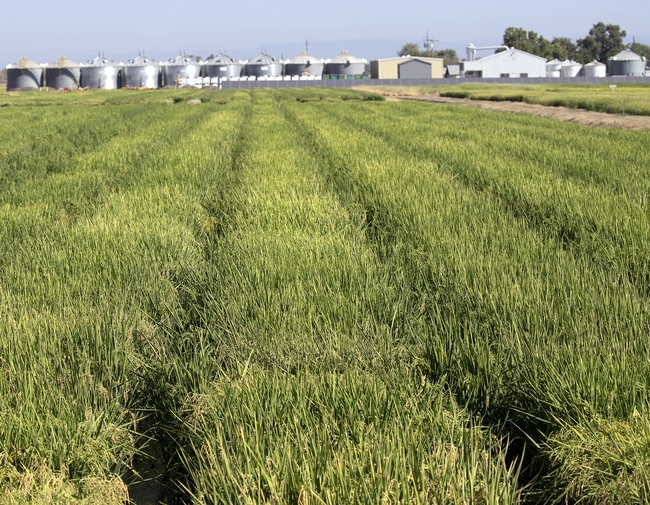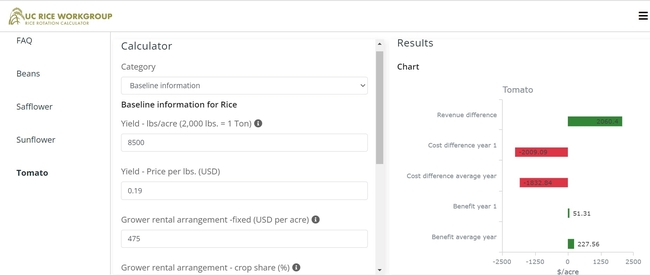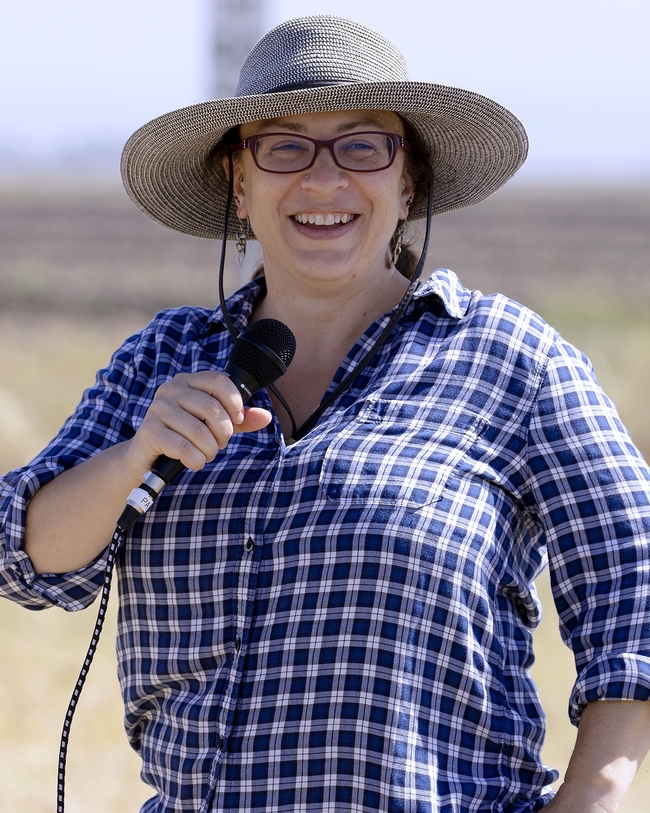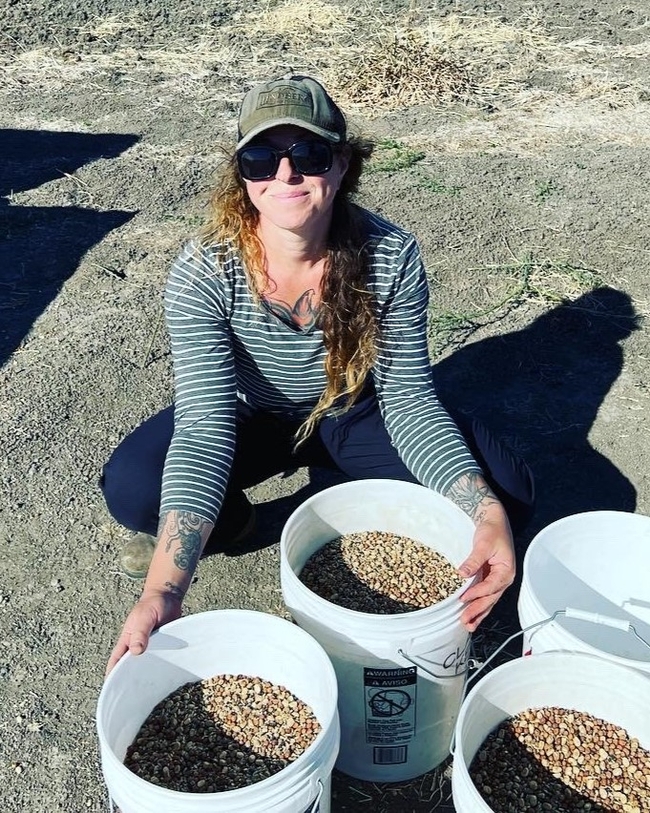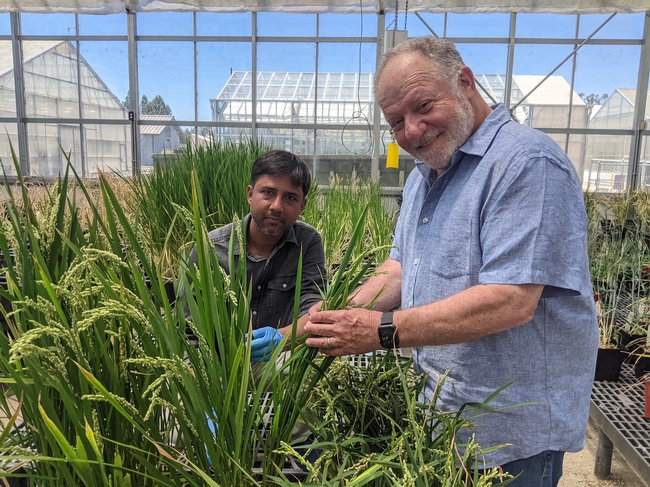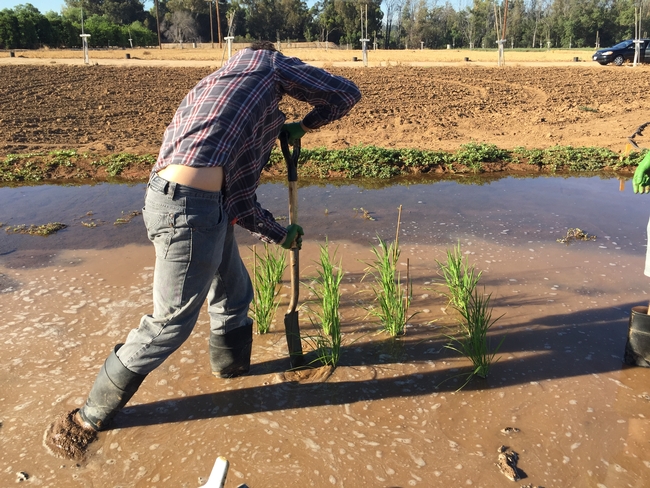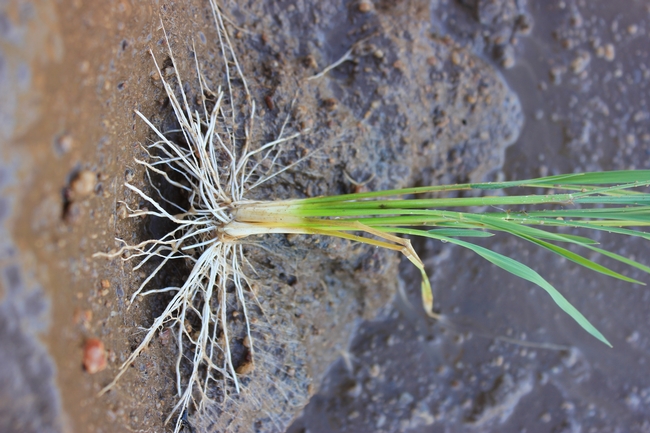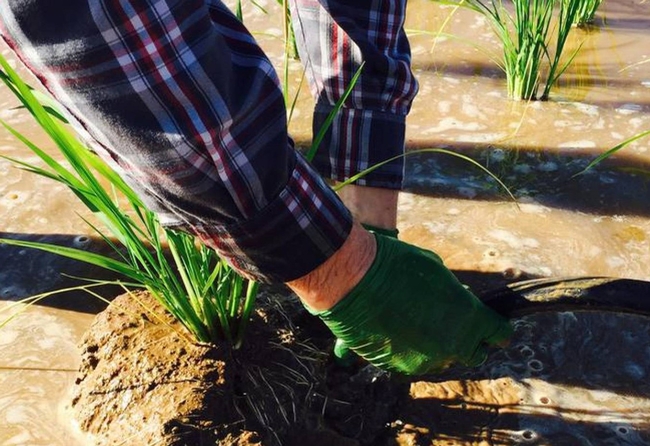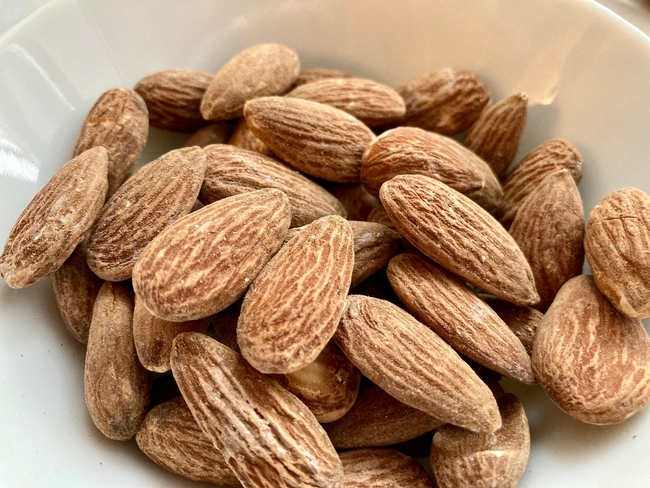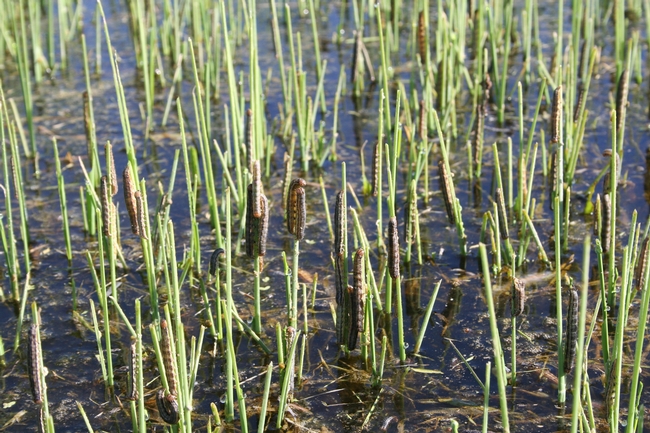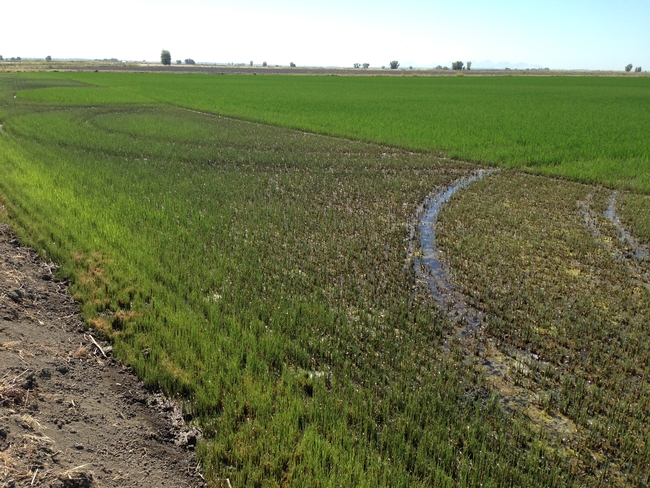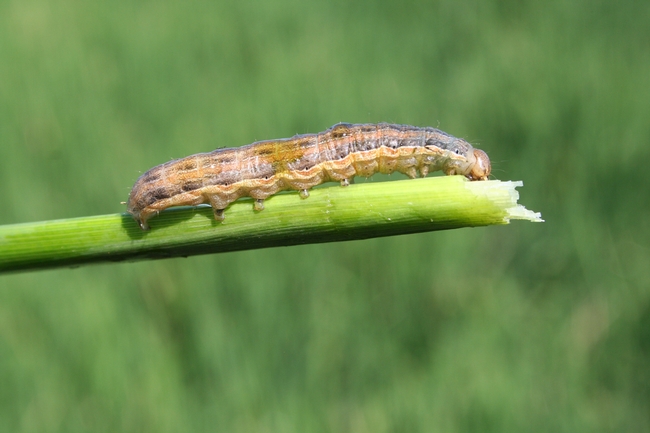Posts Tagged: rice
New tool calculates crop rotation costs, benefits for California rice growers
UC researchers studying how practice can help farmers manage drought, pests, other challenges
Due to severe water shortages, rice acres planted in California plummeted by 37% from 2021 to 2022, according to numbers released recently by the U.S. Department of Agriculture's National Agricultural Statistics Service. But now, thanks to University of California researchers, growers have a new tool they could potentially use to cope with droughts and other environmental and socioeconomic changes.
A crop rotation calculator provides farmers in the Sacramento Valley – where 97% of California rice is grown – with projections on the economic impacts of transitioning their fields from rice into four less water-intensive crops: dry beans, safflower, sunflower or tomato.
The tool represents an initial attempt to address the dearth of research on rice crop rotation in California, while giving growers much-needed, science-backed data on whether the practice would make financial sense for their farms.
“I believe more rice growers could benefit from the many advantages of crop rotation, and this new tool is an excellent first step by the UC to help growers look into making such a transition,” said George Tibbitts, a Colusa County rice farmer.
Funded in part by the USDA National Institute of Food and Agriculture, through the Western Integrated Pest Management Center, the calculator is a collaborative effort of UC Agriculture and Natural Resources, UC Integrated Pest Management and UC Davis to fill a major gap in rice research.
“I do think there are people who would have tried rotational crops in the past, but it's just so unknown, we didn't have anything we could give them and be like, ‘Hey, this is the recommended crop for your area,'” said Whitney Brim-DeForest, UC Cooperative Extension rice advisor. “This tool gives them some preliminary data they can use to make a more informed decision.”
Crop rotation a potential boon to growers, environment
UC Davis doctoral student Sara Rosenberg and Brim-DeForest, alongside other members of the UC rice research team, surveyed California rice growers in 2020 on their experiences with and perceptions of crop rotation. Although the practice is rare in the Sacramento Valley (only an estimated 10% of rice acreage is under rotation), some farmers reported benefits that could be crucial in a water-scarce future.
“From having conversations with growers who do rotate, one of the biggest benefits they describe is their flexibility in times of drought, where they can keep producing on their land when there isn't enough water to grow rice,” said Rosenberg, noting that crop rotation could be one option in a “toolbox” of strategies that growers also use to manage fertilizer price shocks, herbicide resistance and other challenges.
During the ongoing drought that caused about half of California's rice acreage to go fallow in 2022, Tibbitts said his water district was only able to allocate 10% of his usual allotment.
“With such a limited supply, it would have been tough to grow even one field of rice,” he said. “But it was enough water so that we could rent two of our fields to a tomato grower – tomatoes under drip irrigation use much less water than a flooded field of rice. We were also able to grow one field of sunflowers, which doesn't need any irrigation at all if you can plant the seeds into existing moisture in the early spring.”
While drought is one motivating factor to rotate crops, Tibbitts said that on principle he avoids planting all his acreage in rice and “not have all (his) eggs in one basket.”
“My primary motivation for rotating into and out of rice has been to help with weed and disease control,” he added. “Crop rotation is a primary tool of IPM (integrated pest management), and I feel it has helped me greatly over the years.”
According to Brim-DeForest, rotating cropping systems can allow for the use of different weed control tools, such as different herbicide modes of action, and different cultural controls such as tillage, reducing the chances of selecting for herbicide-resistant weeds – an increasingly pervasive issue in rice systems.
Rosenberg noted that, in some situations – and depending on the crops in rotation – the practice can also disrupt the life cycles of insects and diseases and potentially improve soil structure and increase nutrient cycling and uptake, which may lead to a reduction in inputs such as fertilizer.
More research on crop diversification needed in rice systems
The benefits of crop rotation for California rice growers are largely theoretical and anecdotal, however, so the UC rice team is looking to add evidence-based grounding through a variety of studies – from looking at long-term effects on soil health indicators to testing various cover crops (which may deliver some benefits of diversification, similar to those of rotation).
“In California, there is no quantitative data on crop rotation in rice,” said Brim-DeForest. “You'd think after a hundred and some odd years (of UC agricultural research), all the research would have been done, but, no – there's tons still to do.”
Through interviews with Sacramento Valley growers, researchers found that cost was frequently mentioned as a barrier to trying crop rotation, along with incompatible soil conditions and a lack of equipment, knowledge and experience.
To help clarify those economic uncertainties, the new calculator tool allows growers to enter baseline information specific to their circumstances – whether they rent or own their own land, whether they contract out the work to plant the rotational crop, and other factors. The calculator then generates potential costs and benefits of staying in rice versus rotating to dry beans, safflower, sunflower or tomato, during the first year and in an “average” year for those crops.
The upfront costs of rotation during “year one” can be daunting. Therefore, the tool only focuses on a short-term profitability perspective. Researchers are currently working on longer term modeling for crop rotation – incorporating the possibility of reduced herbicide use over time, and under different crop yield scenarios, for example – that could significantly change the growers' calculus.
“You could actually be profitable in the long term, whereas this first, short glimpse is showing you a negative,” said Rosenberg.
In addition, thanks to collaboration with the UC IPM team, the rice rotation calculator is an evolving tool that will be continually improved based on user feedback and additional data. Brim-DeForest also said that it could be adapted to other cropping systems – for example, alfalfa going into another rotational crop.
The rice calculator tool can be found at: https://rice-rotation-calculator.ipm.ucanr.edu/.
Other contributors to the project include Bruce Linquist, Luis Espino, Ellen Bruno, Kassim Al-Khatib and Michelle Leinfelder-Miles of UCCE; Cameron Pittelkow of UC Davis; as well as UC IPM team members Chinh Lam, Tunyalee Martin and Hanna Zorlu; and the California rice growers and industry members who participated in the research.
Growing cereal crops with less fertilizer
Discovery could reduce nitrogen pollution, save farmers billions
Researchers at the University of California, Davis, have found a way to reduce the amount of nitrogen fertilizers needed to grow cereal crops. The discovery could save farmers in the United States billions of dollars annually in fertilizer costs while also benefiting the environment.
The research comes out of the lab of Eduardo Blumwald, a distinguished professor of plant sciences, who has found a new pathway for cereals to capture the nitrogen they need to grow.
The discovery could also help the environment by reducing nitrogen pollution, which can lead to contaminated water resources, increased greenhouse gas emissions and human health issues. The study was published in the journal Plant Biotechnology.
Nitrogen is key to plant growth, and agricultural operations depend on chemical fertilizers to increase productivity. But much of what is applied is lost, leaching into soils and groundwater. Blumwald's research could create a sustainable alternative.
“Nitrogen fertilizers are very, very expensive,” Blumwald said. “Anything you can do to eliminate that cost is important. The problem is money on one side, but there are also the harmful effects of nitrogen on the environment.”
A new pathway to natural fertilizer
Blumwald's research centers on increasing the conversion of nitrogen gas in the air into ammonium by soil bacteria — a process known as nitrogen fixation.
Legumes such as peanuts and soybeans have root nodules that can use nitrogen-fixing bacteria to provide ammonium to the plants. Cereal plants like rice and wheat don't have that capability and must rely on taking in inorganic nitrogen, such as ammonia and nitrate, from fertilizers in the soil.
“If a plant can produce chemicals that make soil bacteria fix atmospheric nitrogen gas, we could modify the plants to produce more of these chemicals,” Blumwald said. “These chemicals will induce soil bacterial nitrogen fixation and the plants will use the ammonium formed, reducing the amount of fertilizer used.”
Blumwald's team used chemical screening and genomics to identify compounds in rice plants that enhanced the nitrogen-fixing activity of the bacteria.
Then they identified the pathways generating the chemicals and used gene editing technology to increase the production of compounds that stimulated the formation of biofilms. Those biofilms contain bacteria that enhanced nitrogen conversion. As a result, nitrogen-fixing activity of the bacteria increased, as did the amount of ammonium in the soil for the plants.
“Plants are incredible chemical factories,” he said. “What this could do is provide a sustainable alternative agricultural practice that reduces the use of excessive nitrogen fertilizers.”
The pathway could also be used by other plants. A patent application on the technique has been filed by the University of California and is pending.
Dawei Yan, Hiromi Tajima, Howard-Yana Shapiro, Reedmond Fong and Javier Ottaviani from UC Davis contributed to the research paper, as did Lauren Cline from Bayer Crop Science. Ottaviani is also a research associate at Mars Edge.
The research was funded by the Will W. Lester Endowment. Bayer Crop Science is supporting further research on the topic.
Editor's note: Blumwald is affiliated with UC Agriculture and Natural Resources through the Agricultural Experiment Station at UC Davis.
New strategies to save the world’s most indispensable grain
Genetic insights help rice survive drought and flood
Plants — they're just like us, with unique techniques for handling stress. To save one of the most important crops on Earth from extreme climate swings, scientists are mapping out plants' own stress-busting strategies.
A UC Riverside-led team has learned what happens to the roots of rice plants when they're confronted with two types of stressful scenarios: too much water, or too little. These observations form the basis of new protective strategies.
“This one crop is the major source of calories for upwards of 45 percent of humanity, but its harvests are in danger,” said Julia Bailey-Serres, UCR geneticist and study lead. “In the U.S., floods rival droughts in terms of damage to farmers' crops each year.”
While it is possible for rice to flourish in flooded soils, the plants yield less food or even die if the water is too deep for too long. This work simulated prolonged floods of five days or longer, in which plants were completely submerged. It also simulated drought conditions.
In particular, the researchers examined the roots' response to both types of conditions, because roots are the unseen first responders to flood and drought-related stress.
Their work is described in a new paper published in the journal Developmental Cell.
One key finding is about a cork-like substance, suberin, that's produced by rice roots in response to stress. It helps protect from floods as well as from drought.
“Suberin is a lipid molecule that helps any water drawn up by the roots make it to the shoots, and helps oxygen from shoots to reach roots,” Bailey-Serres said. “If we reinforce the plant's ability to create suberin, rice has better chances for survival in all kinds of weather.”
The researchers were able to identify a network of genes that control suberin production and can use this information for gene editing or selective breeding.
“Understanding suberin is particularly exciting because it is not susceptible to breakdown by soil microbes, so carbon that the plant puts into suberin molecules in the roots is trapped in the ground,” said Alex Borowsky, UCR computational biologist and study co-author.
The researchers also identified the genes controlling some of rice's other stress behaviors.
“One of our interesting findings is that when rice plants are submerged in water, the root cell growth cycle goes on pause, then switches back on shortly after the shoots have access to air,” Bailey-Serres said.
In the future, the research team plans to test how modifying these stress responses can make the plant more resilient to both wet and dry conditions.
“Now that we understand these responses, we have a roadmap to make targeted changes to the rice genome that will result in a more stress-tolerant plant,” Bailey-Serres said.
Though heavy rains and droughts are both increasing as threats, Bailey-Serres has hope that new genetic technology can increase its resilience before it's too late.
“With genome editing, the fact that we can make a tiny but targeted change and protect a plant from disease is amazing. Though our crops are threatened, new technologies give us reasons to hope,” Bailey-Serres said.
‘Containergeddon’ at ports cost California farmers $2.1 billion in exports
New research estimates economic losses due to congestion, inefficiencies
Between wildfires, drought, a trade war and the COVID-19 pandemic, the last few years have been hard on California farmers. But recent research by agricultural economists from UC Davis and the University of Connecticut suggests that economic losses to California agriculture from recent supply chain disruptions may have an even greater economic impact.
In an article titled “‘Containergeddon' and California Agriculture,” researchers estimate that there was a 17% decline in the value of containerized agricultural exports between May and September 2021, resulting from recent port congestion. This amounts to around $2.1 billion in lost foreign sales, which exceeds losses from the 2018 U.S.-China trade war.
By the peak of the disruption in September 2021, nearly 80% of all containers leaving California ports were empty – about 43% fewer filled containers leaving California's ports than there were prior to the pandemic. And since 40% of filled shipping containers leaving California's ports are filled with U.S. agricultural products – around a third of which are from California – farmers in the state experienced significant lost export opportunities.
By September 2021, there were around 25,000 fewer containers filled with agricultural products leaving California ports than there were in May 2021. Processed tomatoes, rice, wine and tree nuts saw the sharpest average trade declines.
“We calculated California tree nut producers lost about $520 million,” said Colin Carter, UC Davis Distinguished Professor of agricultural and resource economics. “This was followed by wine with a loss of more than $250 million and rice with about $120 million lost.”
During the pandemic, an increase in household savings led to increases in consumer spending, with many of these additional goods being imported from Asia. California ports were overwhelmed by the added shipping containers coming in from Asia. At times, bottlenecks at Southern California ports left more than 80 vessels waiting off the coast to unload. Docks and warehouses ran out of space and the turnaround time for shipping containers nearly doubled.
Increased U.S. demand for imported goods from Asia also led to increased demand for empty shipping containers in Asia. Prior to the pandemic, freight rates for shipping containers from Shanghai to Los Angeles were already higher than the return trip from Los Angeles, but this gap widened significantly after COVID-19. By September 2021, the fee to ship a 40-foot container from Shanghai to Los Angeles had increased sixfold to $12,000 – while the return trip from Los Angeles was only $1,400.
The high prices for containers from Asia, coupled with shipping delays from the high volume of imported goods entering California ports, made it more profitable for shippers to return containers to Asia empty, rather than waiting at the ports to have them loaded with U.S. exports for the return trip.
“If port inefficiencies persist, the ramifications for California agriculture will extend beyond the immediate loss of foreign sales, as importers begin to view California as an unreliable supplier of agricultural products,” Carter said.
To learn more about the supply chain disruptions at California ports, and their effect on California agriculture, read the full article by Colin Carter (Distinguished Professor in the Department of Agricultural and Resource Economics at UC Davis), Sandro Steinbach, and Xiting Zhuang (assistant professor and Ph.D. student, respectively, both in the Department of Agricultural and Resource Economics at the University of Connecticut): “‘Containergeddon' and California Agriculture,” ARE Update 25(2): 1–4. UC Giannini Foundation of Agricultural Economics, online at https://giannini.ucop.edu/filer/file/1640021835/20297/.
ARE Update is a bimonthly magazine published by the Giannini Foundation of Agricultural Economics to educate policymakers and agribusiness professionals about new research or analysis of important topics in agricultural and resource economics. Articles are written by Giannini Foundation members, including University of California faculty and Cooperative Extension specialists in agricultural and resource economics, and university graduate students. Learn more about the Giannini Foundation and its publications at https://giannini.ucop.edu/.
Monitoring armyworms in rice helps reduce damage
Armyworms can be a serious pest in rice. The worms can eat the rice foliate or panicles, and cause yield reductions.
In 2015, a severe outbreak of armyworms caught rice growers by surprise, resulting in yield losses. In a 2018 survey conducted by UC Cooperative Extension, rice growers reported average yield losses in 2015 ranging from 4% to 12%. Since UCCE began a monitoring program in 2016, rice losses to armyworms have been rare, according to Luis Espino, UC Cooperative Extension rice farming systems advisor in Butte and Glenn counties.
To safeguard the rice crop against the pests, UCCE began conducting areawide monitoring of armyworms in 2016 using pheromone traps that attract the moths as they fly around rice fields. The traps are set up in 15 locations of the Sacramento Valley, from Richvale to Knights Landing, and in three sites in the Delta, covering most of the rice production area of California. The traps were set up early in the season and checked weekly until fields are ready to harvest.
“Moth numbers are delivered to more than 1,500 growers and crop consultants weekly via email, so they have a warning system to know when populations are increasing and when to start scouting closely,” Espino said.
“Treatments are not always needed, but armyworm damage can occur quickly and monitoring needs to be increased during the periods of peak moth flight,” he said. During periods of peak flight, the UCCE advisors provide growers with information on how to decide if a treatment is needed.
The information from the armyworm monitoring network, together with efforts by the rice industry to register insecticides that are effective at controlling armyworms, has resulted in better control of armyworms and less yield losses.
“In 2017 and 2018, I'd say yield loss due to armyworms was rare, and probably only happened in a couple of cases,” Espino said. “It's hard to give you hard numbers, but I'd say in 2017 and 2018, yield losses have been reduced to a minimum.”


